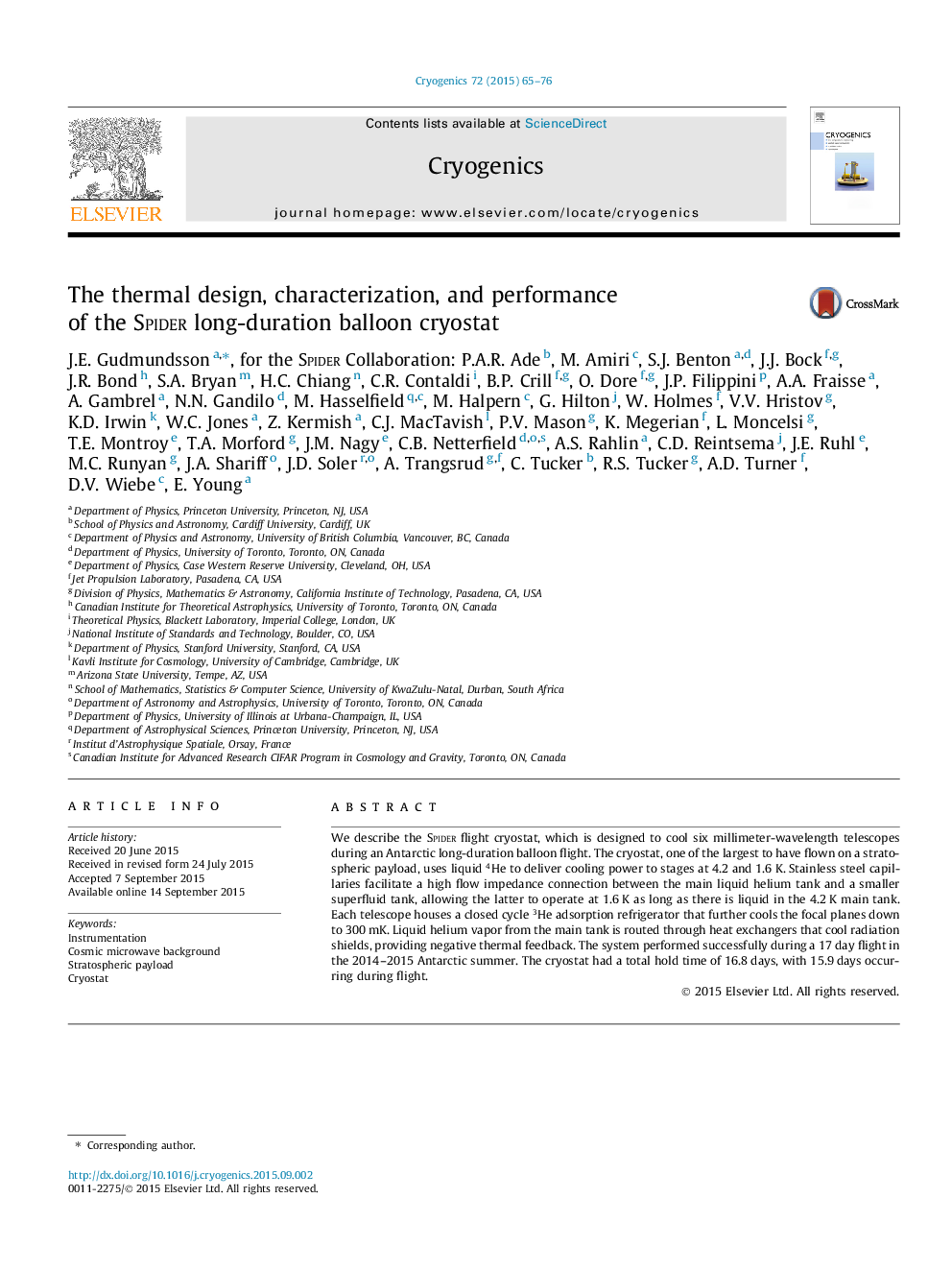| Article ID | Journal | Published Year | Pages | File Type |
|---|---|---|---|---|
| 1507283 | Cryogenics | 2015 | 12 Pages |
Abstract
We describe the Spider flight cryostat, which is designed to cool six millimeter-wavelength telescopes during an Antarctic long-duration balloon flight. The cryostat, one of the largest to have flown on a stratospheric payload, uses liquid 4He to deliver cooling power to stages at 4.2 and 1.6Â K. Stainless steel capillaries facilitate a high flow impedance connection between the main liquid helium tank and a smaller superfluid tank, allowing the latter to operate at 1.6Â K as long as there is liquid in the 4.2Â K main tank. Each telescope houses a closed cycle 3He adsorption refrigerator that further cools the focal planes down to 300Â mK. Liquid helium vapor from the main tank is routed through heat exchangers that cool radiation shields, providing negative thermal feedback. The system performed successfully during a 17Â day flight in the 2014-2015 Antarctic summer. The cryostat had a total hold time of 16.8Â days, with 15.9Â days occurring during flight.
Related Topics
Physical Sciences and Engineering
Materials Science
Electronic, Optical and Magnetic Materials
Authors
J.E. Gudmundsson,
